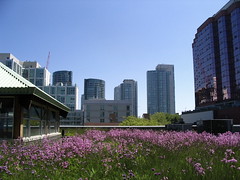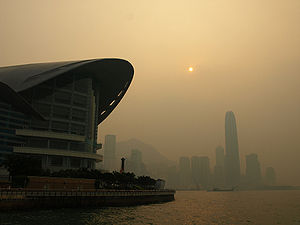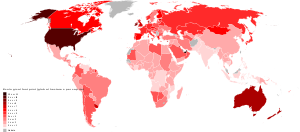State of the World's Cities 2010/2011 - Bridging the Urban Divide (224 page pdf, United Nations Human Settlements Programme, 2010)
Also discussed here: Cities at Their Best and Worst (The Pump Handle- a water cooler for the public health crowd, Dec. 6, 2010)

Key Quotes:
“Over the past 10 years, the proportion of the urban population living in slums in the developing world has declined from 39 per cent in the year 2000 to an estimated 32 per cent in 2010. And yet the urban divide endures, because in absolute terms the numbers of slum dwellers have actually grown considerably, and will continue to rise in the near future”
“The poor are typically driven to the least developed areas of a city, often places that are poorly integrated to the urban fabric, where dilapidated environments lead to worse health outcomes and greater risks of premature deaths than in improved and well-maintained urban areas”
“one in three urban dwellers lived in slum conditions. Many slums are located on the outskirts of cities.. The population of slum dwellers around the world continues to grow at around 10 percent every year, intensifying the problem worldwide”
“Suburbanization and urban sprawl are happening in different places throughout the world, spreading low-density urban patterns and negative environmental, economic and social externalities.. features typically associated with sprawl include overdependence on motorized transport coupled with a lack of alternatives, a relative uniformity of housing options, and pedestrian-unfriendly spaces”
“Suburbanization in developing countries comes mainly as an escape from poor governance, lack of planning and poor access to amenities. Rich and poor escape to find refuge outside the city, which generates further partitioning of the physical and social space”
“child mortality rates remain highly associated with diarrhoeal diseases, malaria and acute respiratory infections related to overcrowding and air pollution; these in turn result from various environmental health hazards such as lack of sanitation and hygiene, lack of access to safe water, poor housing conditions, poor management of solid wastes, and many other hazardous conditions“
“Urban corridors, in contrast, present a type of spatial organization with specific economic and transportation objectives. In urban corridors, a number of city centres of various sizes are connected along transportation routes in linear development axes that are often linked to a number of megacities, encompassing their hinterlands”
“Indoor air pollution is a “quiet” and overlooked killer, and lack of global awareness is one of the primary obstacles to the widespread implementation of existing, proven responses.. indoor air pollution is responsible for some three million deaths every year. Women who cook in enclosed quarters using biomass fuels and coal are at risk of chronic bronchitis and acute respiratory infections, as are their children, who are often exposed to significant indoor air pollution alongside their mothers on a daily basis.”
Related articles
- Health and Urban Poverty (pollutionfree.wordpress.com)
- Urban migration drives surge in world's slum dwellers (cnn.com)
- A Compendium on Health of Urban Poor in South East Asia (urbanhealthupdates.wordpress.com)
- Frost & Sullivan forecasts aggressive Megacities growth; need for right mobility solutions and Mobility Integrators (greencarcongress.com)
- Risk of Dying from Heat Waves in US Cities (pollutionfree.wordpress.com)
- Urban Challenges in the 21st Century (scienceblogs.com)
- In a sprawling urban environment, how does the use of underground sewers and water diversion pipes affect the trees and natural landscape above ground? (greenanswers.com)






































